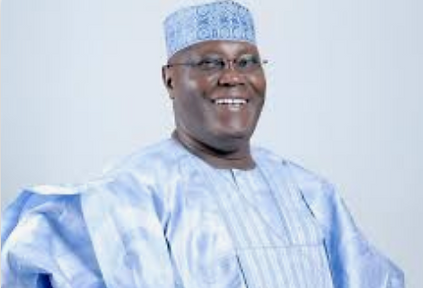NYFA LEADERS' ECONOMIC DIGEST
Episode 7
By NYFA Editors
Sizzling Prices, Sinking Economy: The Astronomical Rise in Crayfish Prices: A Tale of Two Eras.
The crayfish market in Nigeria has experienced a profound transformation, marked by an unprecedented surge in prices, which has skyrocketed to ₦250,000, underscoring the vast economic chasm between Atiku Abubakar's vice presidency (1999-2007) and President Bola Tinubu's administration (2023-till date). This stark contrast highlights the divergent economic trajectories of the two eras, with the current administration grappling with the challenges of economic instability, soaring inflation rates, and currency fluctuations. The astronomical rise in crayfish prices serves as a poignant indicator of the economic woes afflicting Nigerians, particularly in the realm of food affordability.
Atiku Abubakar's Era (1999-2007)
During Atiku's tenure, Nigeria's economy enjoyed relative stability, characterised by moderate inflation rates and steady economic growth. Crayfish prices reflected this stability, ranging from ₦10,000 to ₦12,000, with a modest 20% increase over 8 years. This period of economic stability allowed Nigerians to afford basic necessities, including crayfish, a staple in Nigerian cuisine.
Price Stability Analysis
The prices remained relatively stable, with a possible percentage increase of:
(₦12,000 - ₦10,000) / ₦10,000) x 100% ≈ 20%
From 1999 (₦10,000) to 2007 (₦12,000): approximately 20% increase over 8 years.
Tinubu's Administration (2023-till date)
In contrast, the current administration has been marked by economic instability and soaring inflation rates. The price of crayfish has skyrocketed to ₦250,000.
Price Increase Breakdown (Tinubu's Era)
The price of crayfish in 2023 was ₦50,000, and the current price in 2025 is ₦250,000. To calculate the percentage increase:
(₦250,000 - ₦50,000) / ₦50,000) x 100% ≈ 400%
From 2023 (₦50,000) to 2025 (₦250,000): approximately 400% increase over 2 years.
4-Year and 8-Year Forecast
Assuming the current trend continues, with a 400% increase in crayfish prices over 2 years, we can project a 4-year and 8-year forecast. To calculate the annual increase rate:
(1 + 4)^(1/2) ≈ 2.236 (annual increase rate)
Applying this rate to the current price of ₦250,000:
- Year 3: ₦250,000 x 2.236 ≈ ₦559,000
- Year 4: ₦559,000 x 2.236 ≈ ₦1,250,524
- Year 8: ₦1,250,524 x (2.236)^4 ≈ ₦7,854,419
Comparison and Analysis
Intra-Era Comparison:
- Within Atiku's era, the price increase is approximately 20% over 8 years.
- Within Tinubu's administration, the price increase is approximately 400% over 2 years.
Inter-Era Comparison:
- The price increase from Atiku's era to Tinubu's administration is staggering, with crayfish prices rising from ₦10,000 to ₦250,000.
- If Tinubu's administration continues with the current trend, the price increase from Atiku's era to Tinubu's 8-year forecast would be approximately 78,544%.
Reasons for Inflation
Several factors have contributed to the rising cost of crayfish:
- Macroeconomic instability: Elevated inflation rates and currency fluctuations.
- Supply and demand disequilibrium: Reduced crayfish production and increased demand.
- Elevated transportation costs.
- Governance deficits: Poor governance, corruption, and lack of accountability.
The current economic trajectory is unsustainable due to the alarming rate of inflation, which erodes the purchasing power of Nigerians and undermines economic growth. If left unchecked, this trend will lead to decreased economic activity, reduced investment, and increased poverty. The government's inability to effectively manage the economy, coupled with poor governance and corruption, exacerbates the problem. Urgent action is needed to address the root causes of inflation, restore economic stability, and ensure food affordability for Nigerians. This can be achieved through a combination of monetary and fiscal policies, investment in key sectors, and improved governance.





